Barcelona has long been a global hub for architecture and urban innovation, with Catalan architects like Antoni Gaudí and Ricardo Bofill leading the way. Their visionary approaches not only shaped the city’s skyline but also introduced concepts that align with modern sustainability principles. Exploring their work reveals how design can harmonize with nature, creating spaces that are both beautiful and environmentally conscious.
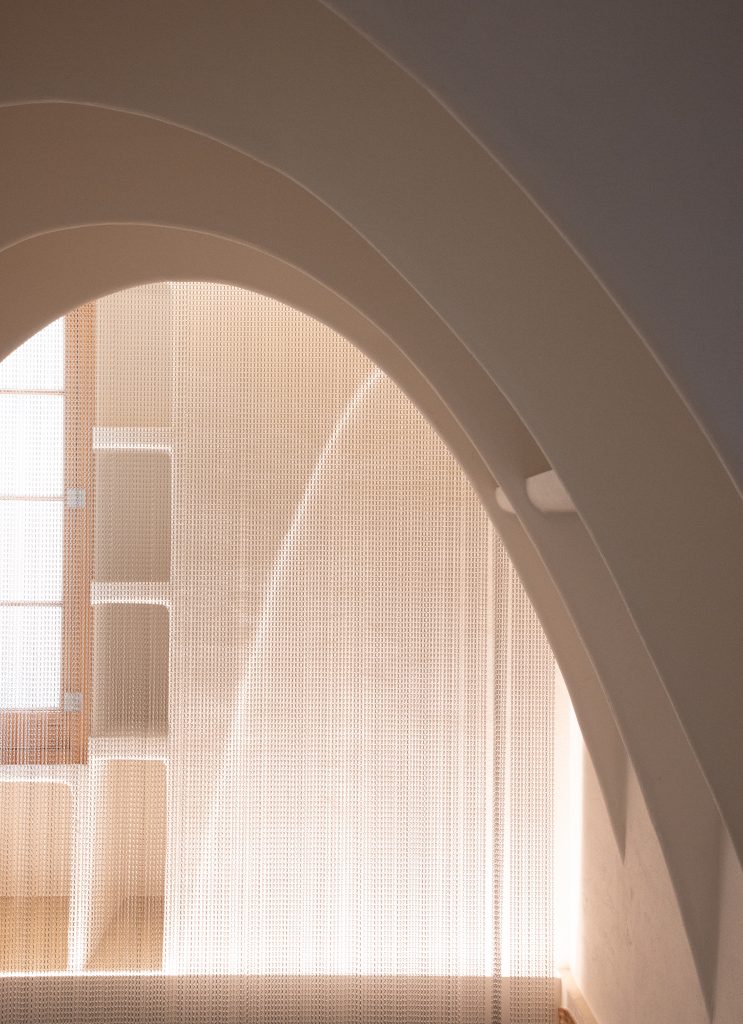
Gaudí: Nature as Blueprint
Antoni Gaudí, born in 1852 near Tarragona, left an indelible mark on Barcelona with masterpieces like Parc Guell, Casa Batlló, Casa Milà, and the Sagrada Familia. While Gaudí’s work is often celebrated for its unique aesthetic, it also embodies principles of sustainability—long before the term became common.
Gaudí was a pioneer in biomimicry, designing buildings inspired by natural forms and ecosystems. Biomimicry, defined as the design and production of materials, structures, and systems modeled on biological entities and processes, allowed Gaudí to create highly efficient architectural forms. His approach wasn’t just about aesthetics; it was a practical method to create efficient, resource-conscious structures.
For instance, Casa Batlló features passive ventilation systems where strategic window placement and internal air pathways maintain thermal comfort without artificial heating or cooling. The central light shaft, glazed in varying shades of blue, enhances daylight penetration while controlling glare, illustrating Gaudí’s mastery of natural lighting principles. Instead of demolishing the existing building, Gaudí chose to renovate, conserving materials and reducing environmental impact—a practice now seen as foundational to sustainable architecture.
In the Sagrada Familia, Gaudí designed columns that mimic trees, branching out to support the structure while minimizing the need for additional materials. These columns follow a hyperboloid structure, optimizing load distribution and reducing material consumption. The use of catenary arches and paraboloid vaults further exemplifies his commitment to structural efficiency through natural forms. This organic integration of form and function showcases how nature can inspire sustainable solutions in architecture.
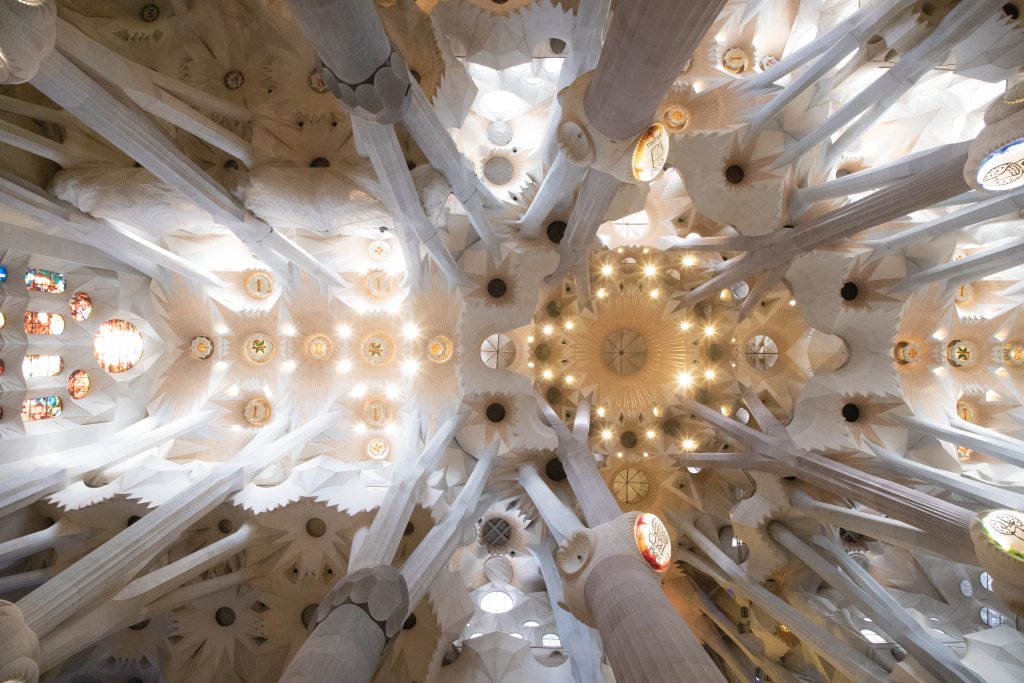
Bofill: Rethinking Urban Spaces
Ricardo Bofill, another iconic Catalan architect, expanded on Gaudí’s legacy with a distinct, forward-thinking style. His works, including Walden 7, La Muralla Roja, and the repurposed cement factory La Fabrica (which doubles as his home and studio), challenge conventional ideas about urban living and sustainability.
Bofill’s philosophy emphasizes adaptive reuse over demolition, turning existing structures into vibrant, functional spaces. La Fabrica exemplifies this approach, transforming an industrial site into a dynamic blend of living, working, and creative environments. This commitment to circular architecture not only reduces construction waste but also preserves the cultural and historical identity of the site.
Bofill’s emphasis on communal spaces and interdisciplinary collaboration resonates with modern co-living environments, where shared living fosters creativity, connection, and sustainability.
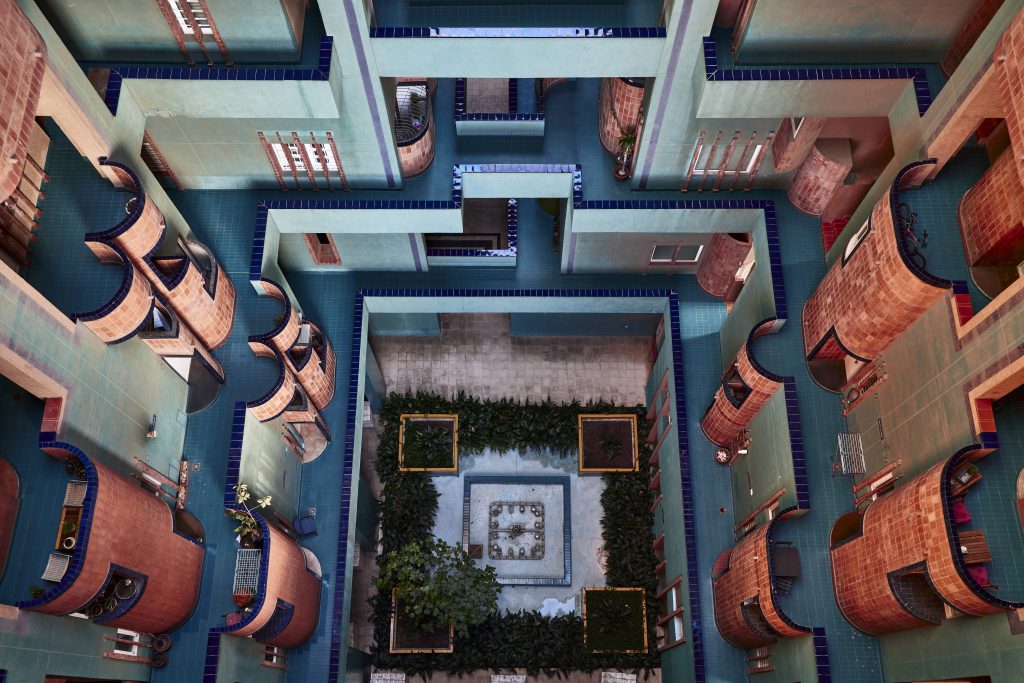
Interdisciplinary Innovation
Bofill’s work is characterized by a multidisciplinary approach, bringing together architects, poets, mathematicians, and engineers. This collaboration fosters creativity and allows for diverse perspectives in addressing architectural challenges. For Bofill, sustainability isn’t just about materials; it’s about integrating cultural, social, and environmental contexts into each project.
His son, Ricardo E. Bofill, highlights the evolution of “organic design” in recent decades. While it once meant merely imitating natural forms, it now involves creating living environments where nature is an active participant. This shift underscores a broader awareness in the architectural field of its environmental footprint and the need for innovative, net-positive solutions.
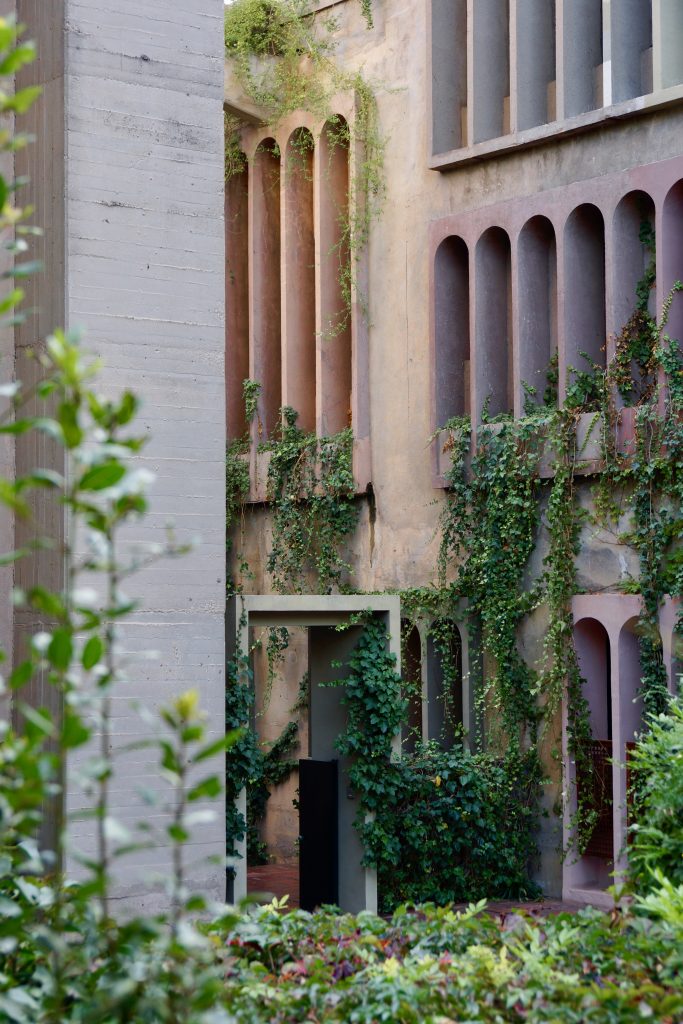
A Legacy for the Future
Gaudí and Bofill’s contributions to architecture go beyond their iconic buildings. They demonstrate how thoughtful design can address both aesthetic and environmental concerns, offering valuable lessons for contemporary urban development. Their work encourages us to see architecture not just as a means of creating shelter, but as a tool for fostering harmony between people, cities, and the natural world.
In cities like Barcelona—and in co-living spaces around the world—these principles continue to inspire new ways of thinking about how we live together sustainably. As urban centers grow and evolve, the innovative spirit of Catalan architecture remains a guiding light for future generations.
_
This article draws inspiration from Mr. Wynwood, an international magazine that celebrated creativity, community, and the transformation of iconic neighborhoods worldwide. Its focus on vibrant urban living and innovative ideas continues to resonate in our exploration of modern co-living, flexible lifestyles, and the needs of a global community of digital nomads.
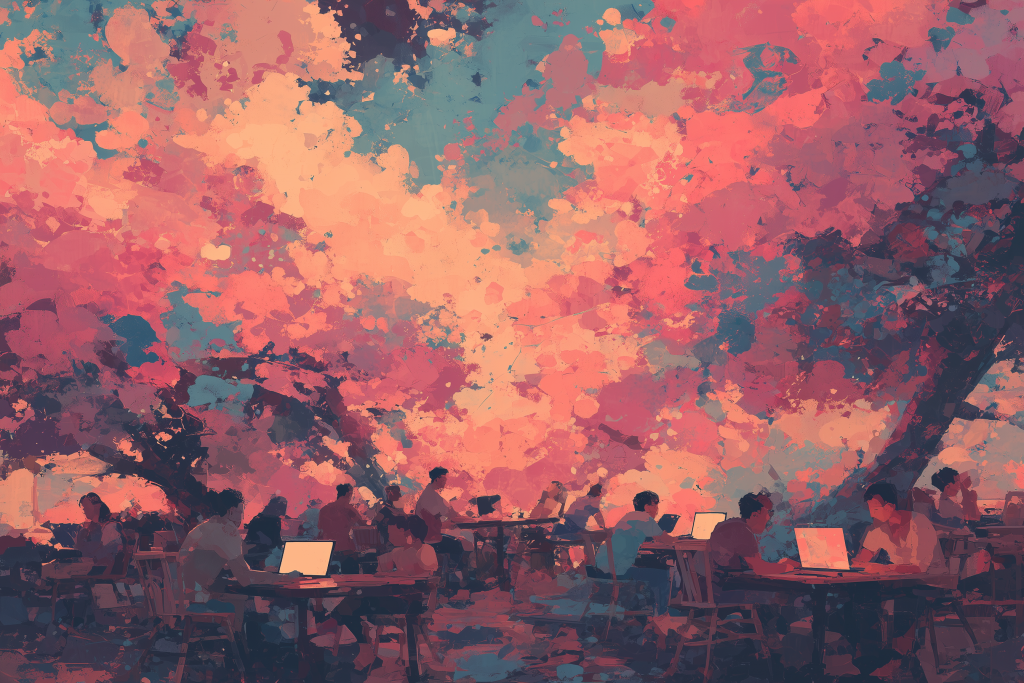
Beyond Four Walls
From rooftops to shared kitchens, workspaces are evolving—blending flexibility, nature, and community.

Woven Cities with Alan King on Design Without Borders
Alan King creates streetwear infused with stories from his global travels, reflecting places, communities, and experiences.

